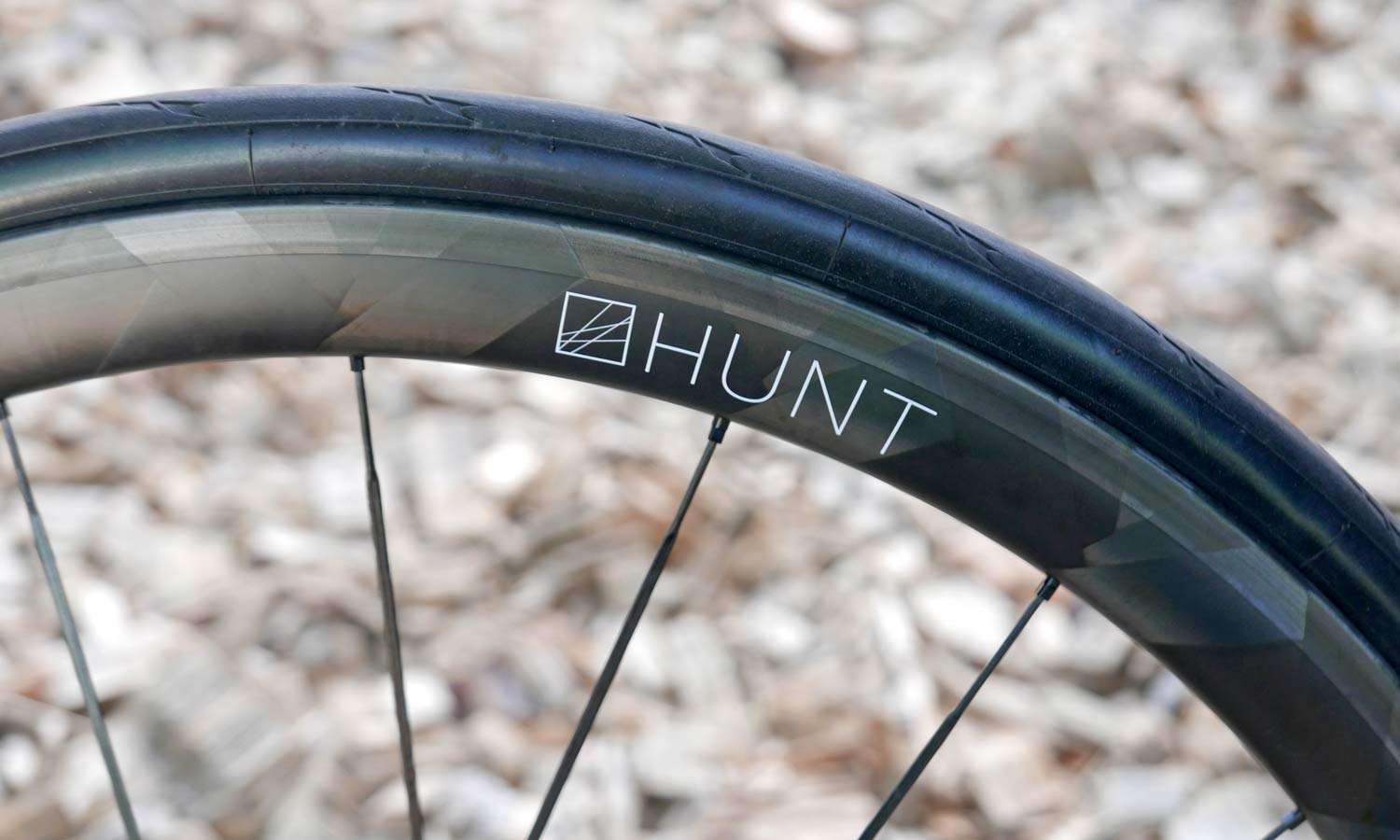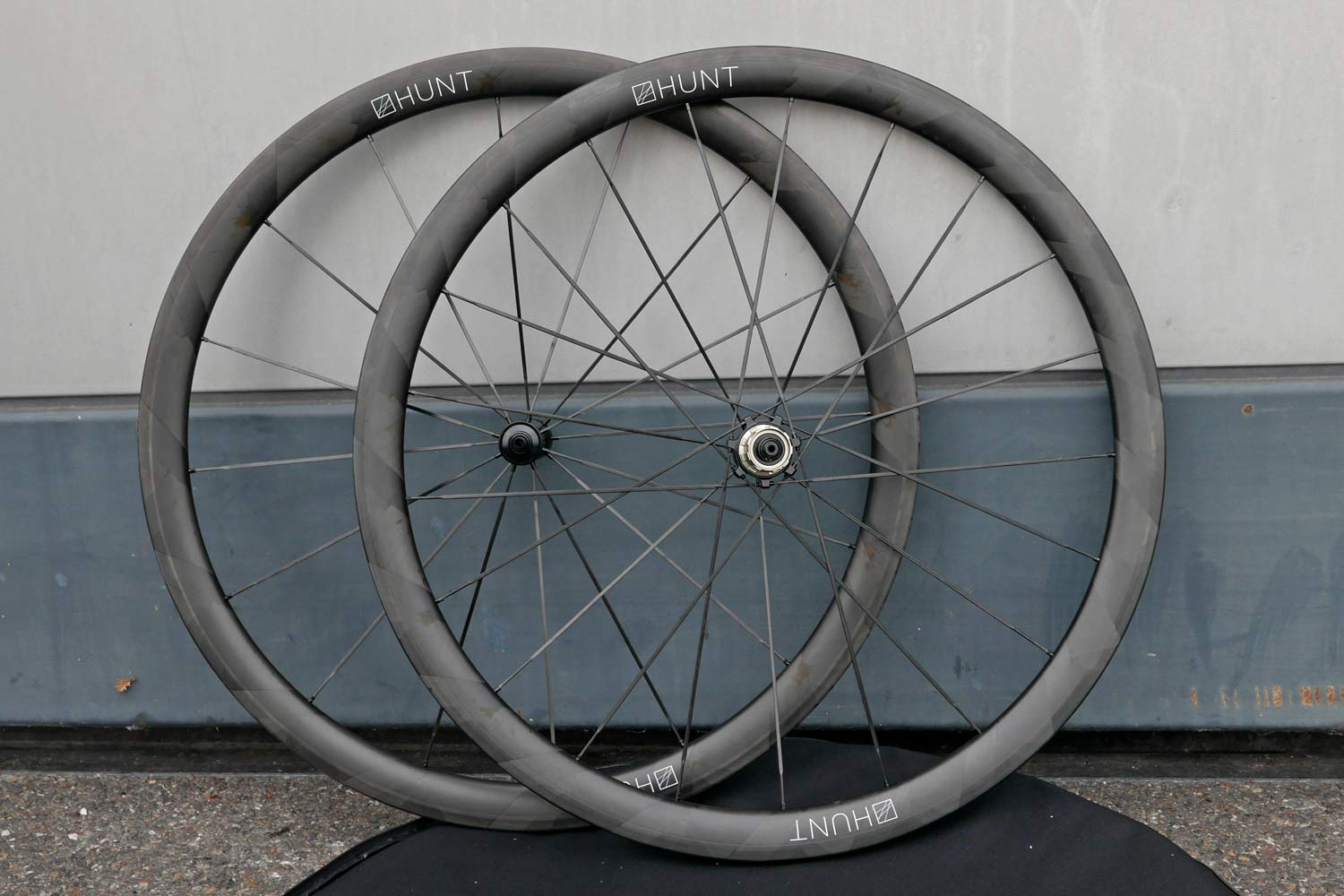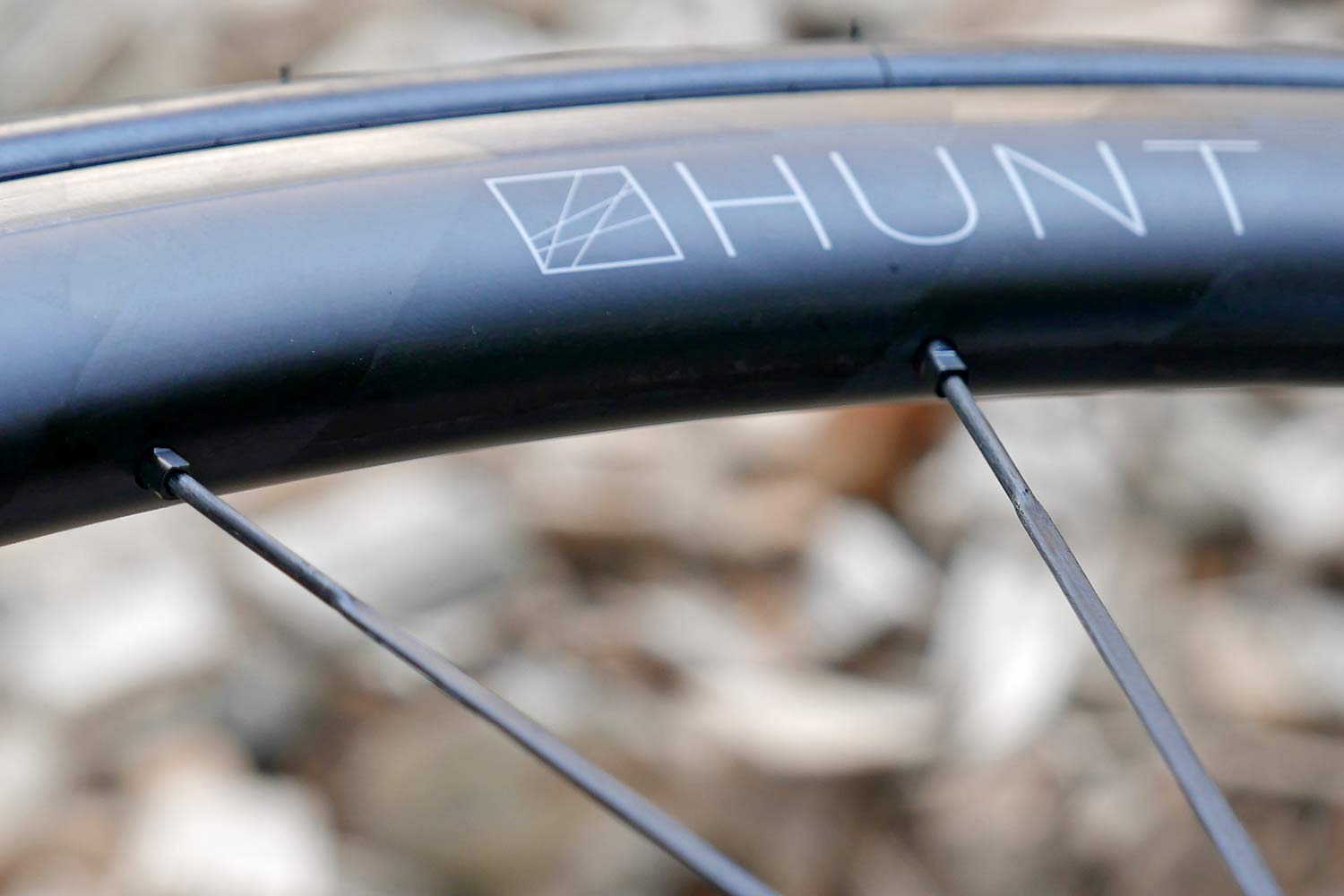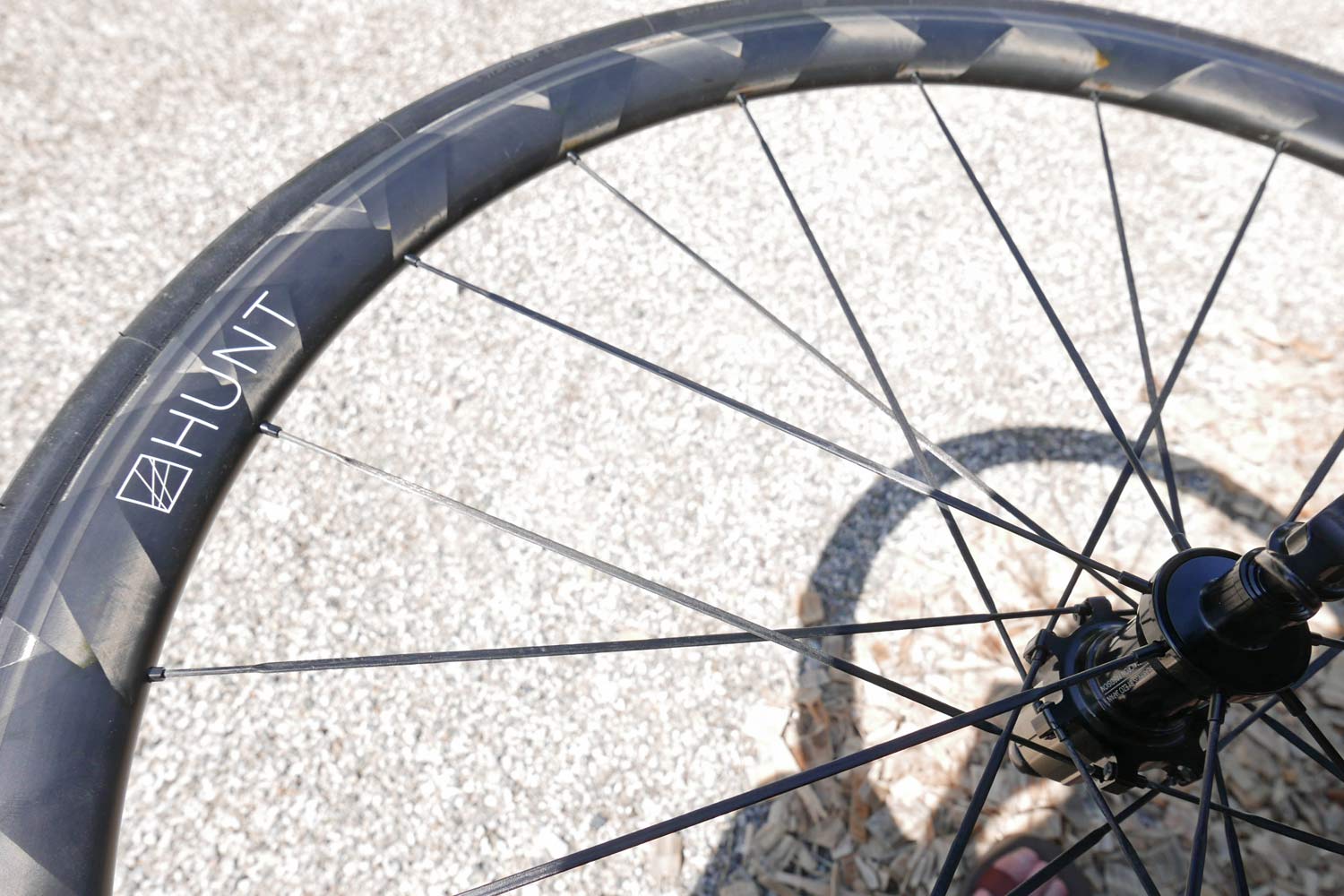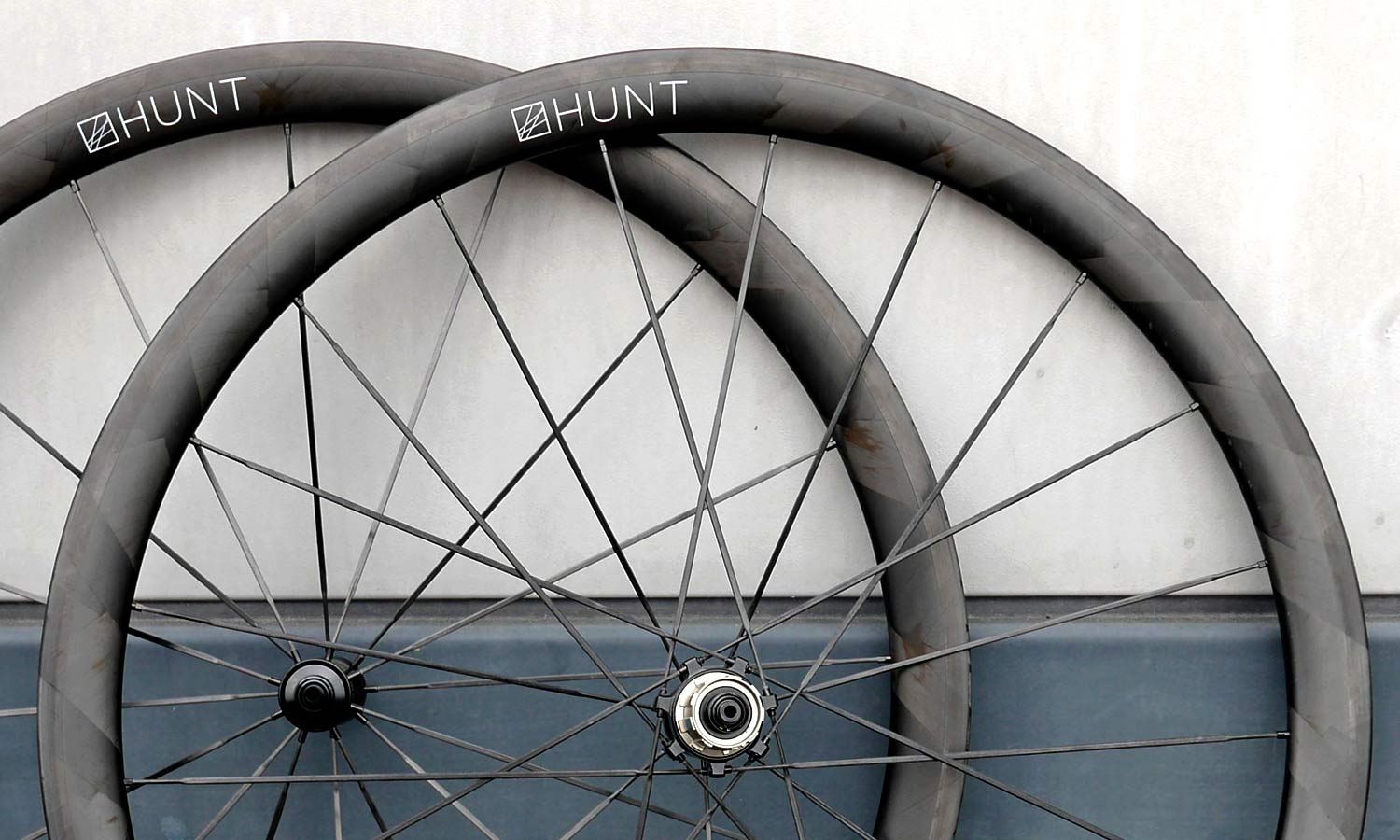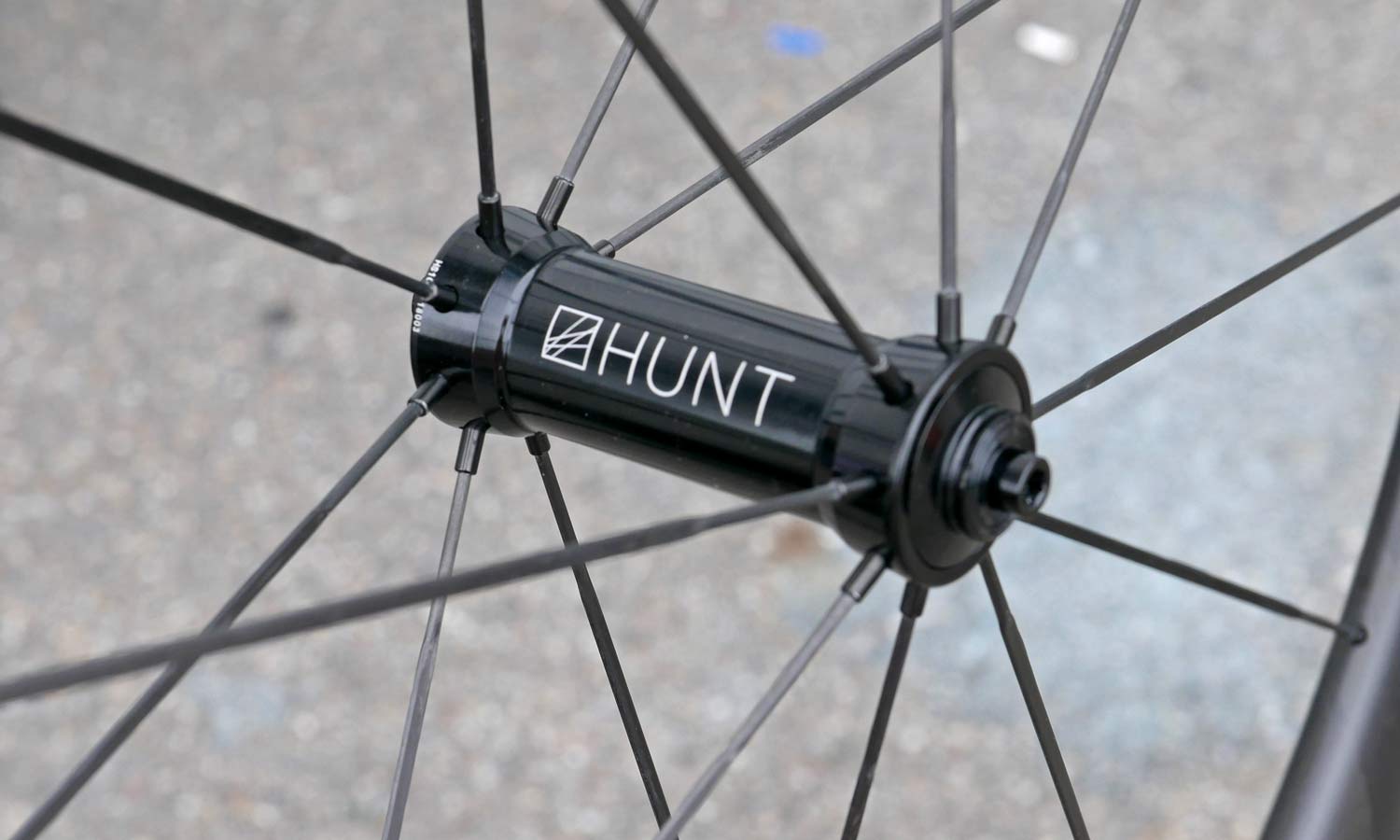UK wheelmaker Hunt Bike Wheels’ latest creation gets an extra dose of carbon to push the boundaries of what might be considered affordable. With full carbon TaperLock bladed spokes on top of a filament-wound tubeless-ready carbon rim, the 36 UD Carbon Spoke road wheels are the priciest they sell. But they also become Hunt’s stiffest, most responsive road wheels, and the new race weapon for the Canyon DHB British UCI Conti team.
Hunt 36 UD Carbon Spoke lightweight carbon road wheels
With a relatively shallow 36mm deep blunt-nosed profile and a light 1295g claimed weight, Hunt’s new 36 UD Carbon Spoke wheels are built as all-rounders – a second generation of their Carbon Wide Aero road wheels. Light weight was of course one goal, but the unique bladed carbon spoke construction was actually developed to create a more responsive race wheel. Hunt says that using the mechanically secured carbon spokes (no bonding), the new wheels are 31% stiffer than an “equivalent steel spoked wheelset”. And all of that come in a wheelset that can be trued, maintained, or even have spokes replaced like a conventional wheel.
TaperLock carbon spokes
The trick to Hunt’s stiff wheel, are strong spokes – greater than 450kgf max tensile strength, or about 50% more than conventional stainless spokes. But those bladed carbon spokes are also unique in that they are not bonded with a conventional resin to either the rim, hub, or nipples.
Instead they are molded & cured with a taper/wedge at either end that is mechanically locked into the nipples. At the hub, it is an alloy nipple (or mandrel using Hunt’s term) that is pulled against the carbon taper. And at the rim, a square-sided steel nipple with threads is locked on, which is then tensioned (or trued, as needed) from a nut inside the rim bed.
Filament wound, tubeless carbon rim
Not to be overlooked because of the new spoke tech, the carbon rims themselves feature some new tech for Hunt, too. Hunt adapted a filament winding manufacturing process on top of more conventional hand layups to create the new rim which allows for more careful placement of fibers across the rim. It also allows the use of more continuous fibers leading away from the spoke holes where forces are transferred. It requires less extra material to account for more accurate carbon placement. Hunt also used this more precise layup technique to vary the amount of carbon across the rim, specifically to add spoke hole reinforcement while reducing material between the spokes to save weight without reducing strength or durability.
Tech details
The new 36 UD Carbon Spoke road wheels are rim brake only with a Griptec basalt-ceramic brake track (hopefully just for now?) and feature a blunt-nosed, semi-aero wide profile. Rim internal width is 19mm (26mm external, 36mm deep). They are tubeless-ready, and come with tape installed for easy use with or without tubes.
The wheels feature Hunt’s alloy Sprint hubs, adapted for the unique TaperLock spokes. The forged, then CNC-machined 6061-T6 hubs spin on oversized 7075 axles, with the rear hub featuring 3 triple toothed pawls for fast 7.5° engagement and steel freehub spline reinforcement. Shimano/SRAM, Campy, XD & XDR bodies are available.
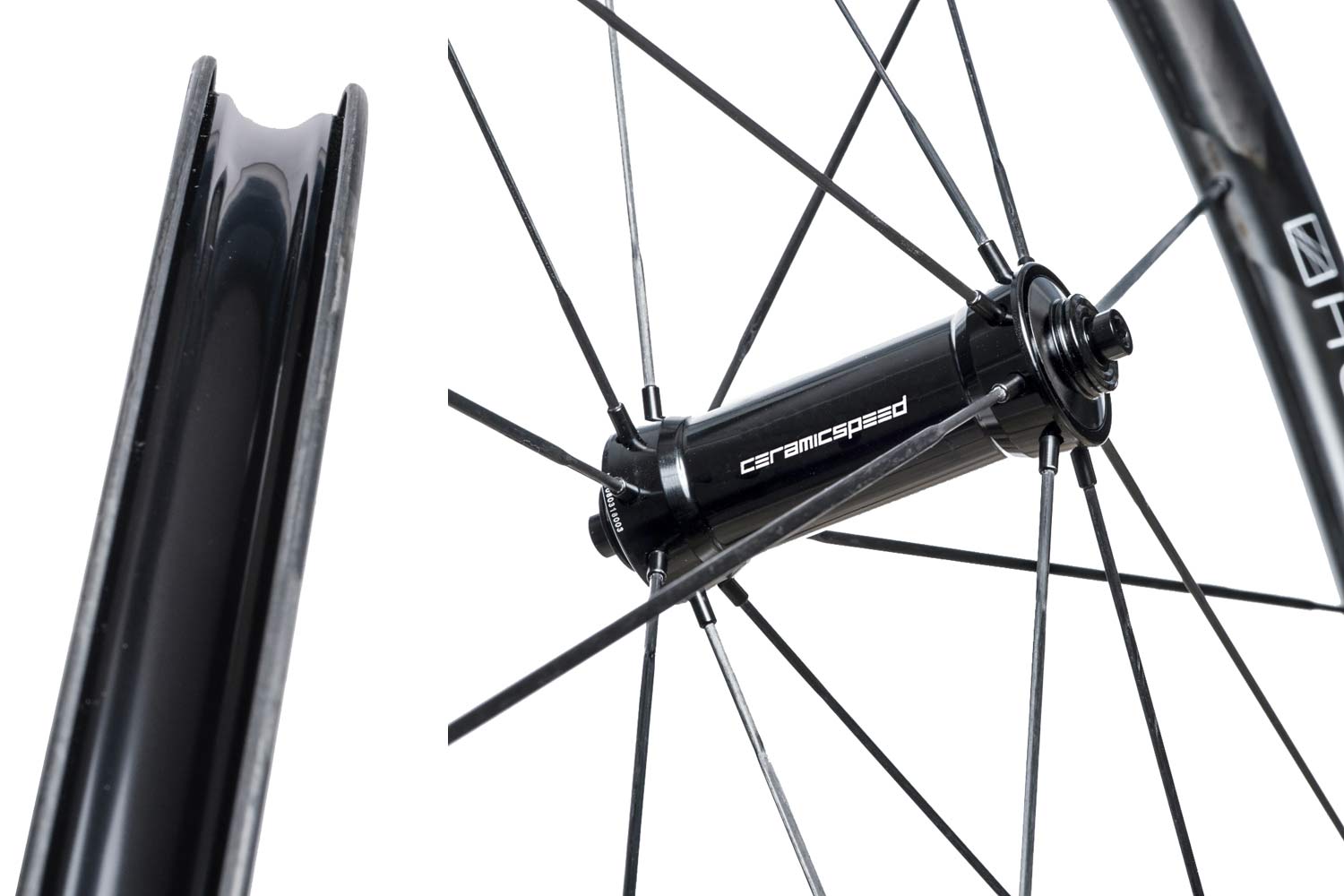
They also include CeramicSpeed hybrid ceramic bearings standard for smooth, long-lasting rolling. The rim brake wheels are Quick Release, and include Hunt’s smooth, external brass cam QRs, plus tubeless valves, brake pads, and apparently even spare carbon spokes.
Pricing & availability
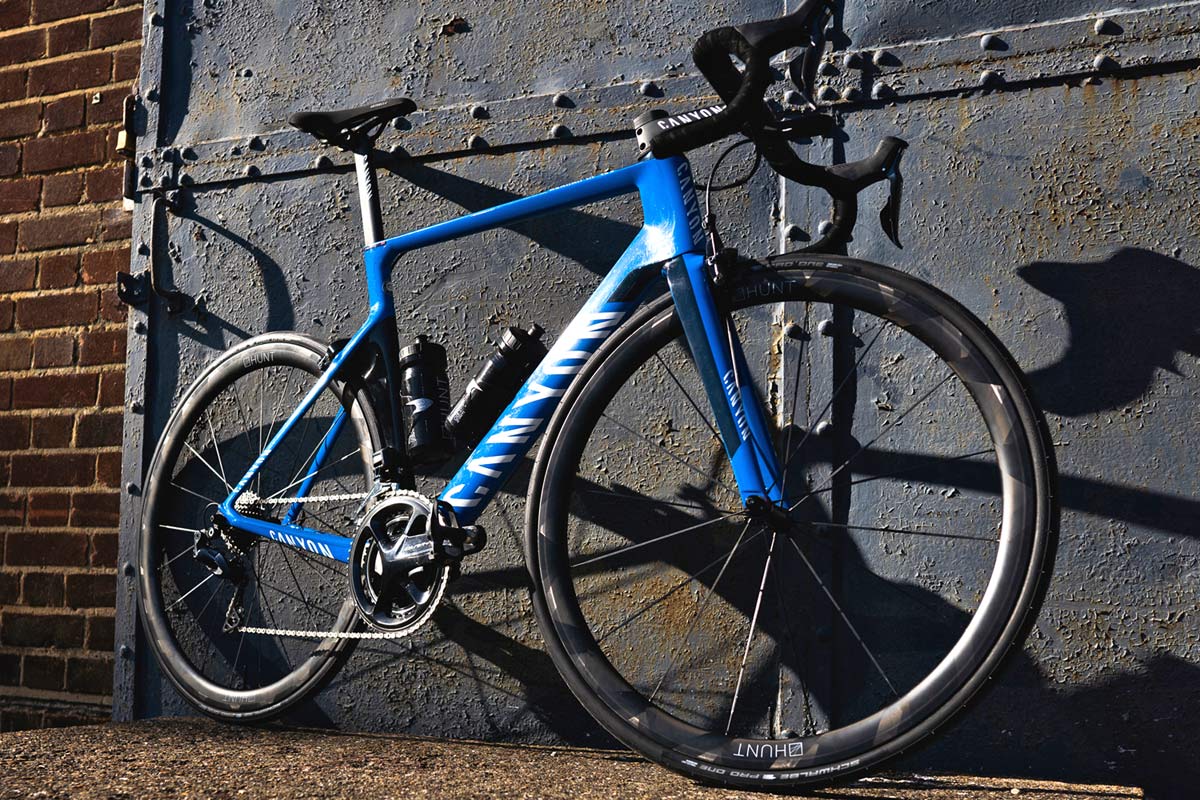
Like most Hunt wheels, the 36 UD Carbon Spoke wheelset is available now for pre-order for £1379 ($1765 / 1606€) for delivery in mid-November 2019. You can either pay now, or put down a refundable £99 deposit to claim one of the first retail sets. Why they are launching now is that after being tested in training and the odd race by Canyon DHB riders, they be raced more openly this coming week at the Elite Men’s World Championships Road Race in Yorkshire.
